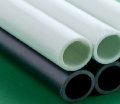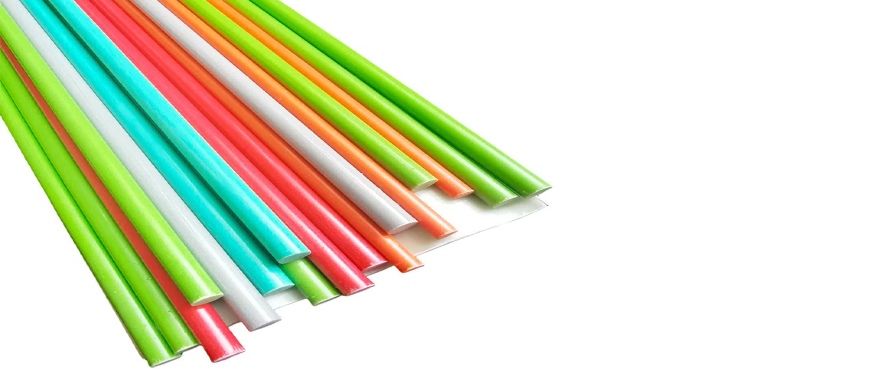
Fiberglass rods are composite materials made from glass fibers and resin. This combination creates a product that is lightweight yet strong, making it an ideal choice for outdoor furniture like camping chairs. The manufacturing process involves weaving glass fibers together and saturating them with a polymer resin, which is then cured to form a solid structure. The resulting rods are not only strong but also resistant to environmental factors, which is crucial for camping gear. Are fiberglass rods used in camping chairs cheap? Yes, they are lightweight, flexible, and cost-effective, though less durable than aluminum options.
What Are Fiberglass Rods Used in Camping Chairs Cheap?
The question of whether fiberglass rods used in camping chairs are cheap is a topic of interest for many consumers. Camping chairs need to be lightweight, portable, and durable, making the choice of materials crucial. Fiberglass rods are commonly employed in the construction of these chairs due to their unique fiberglass rod properties.
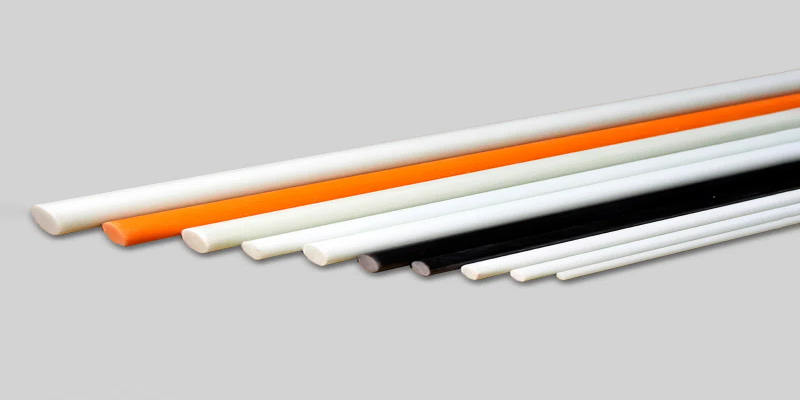
Environmental Considerations
An essential aspect of the discussion around whether fiberglass rods used in camping chairs are cheap involves environmental factors. Fiberglass is not biodegradable, which raises questions about its ecological impact. However, many manufacturers, including GangLong Fiberglass, are taking steps to produce materials that have a reduced environmental footprint.
Recycling programs for fiberglass are emerging, aiming to minimize waste and encourage sustainable practices. While the cost of environmentally friendly production methods may be higher initially, the long-term benefits for the planet can be worth it. This consideration adds another layer to the question of cost-effectiveness in using fiberglass rods.
Benefits of Using Fiberglass Rods
The advantages of fiberglass rods make them a compelling choice for camping chairs. First, they are incredibly lightweight, allowing for easy transport. This is especially important for campers who often carry multiple items and need to minimize weight. Second, fiberglass rods offer excellent flexibility, which contributes to the comfort of the chair. They can bend slightly without breaking, providing a balance between support and comfort.
Durability is another significant benefit of fiberglass rods. They resist corrosion, rust, and decay, which is particularly advantageous in outdoor settings. These rods can withstand exposure to moisture and varying temperatures without compromising their structural integrity. This durability translates into are fiberglass rods used in camping chairs cheap better value over time.
The Importance of Are Fiberglass Rods Used in Camping Chairs Cheap?
When examining whether fiberglass rods used in camping chairs are cheap, it is essential to consider production costs and market pricing. Fiberglass rods tend to be more affordable than some alternatives, such as aluminum or high-end composite materials. The manufacturing process for fiberglass is well-established, and the raw materials are relatively inexpensive, contributing to lower overall costs.
However, the cost can vary based on factors like the quality of the fiberglass used and the specific design of the camping chair. Higher-quality fiberglass rods may be more expensive but offer superior performance and longevity. Conversely, lower-quality options may reduce initial costs but could lead to replacements sooner, which impacts long-term value.
The Role of GangLong Fiberglass
GangLong Fiberglass is a brand recognized for its high-quality fiberglass products, including rods used in camping chairs. When consumers choose camping chairs with GangLong Fiberglass rods, they can expect a balance of affordability and durability. Are fiberglass rods used in camping chairs cheap?This brand emphasizes the use of quality materials in its products, ensuring that the chairs not only meet cost expectations but also perform well in various environments.
GangLong Fiberglass rods are specifically designed to meet the demands of outdoor use, offering a robust solution for camping chairs. The company’s focus on quality means that even if the initial purchase price is slightly higher, the long-term benefits may justify the investment.
Market Trends and Consumer Preferences
The camping chair market is influenced by consumer preferences, which evolve over time. As outdoor enthusiasts seek more comfortable and functional gear, the demand for high-quality materials, including fiberglass, has increased. Many consumers are willing to invest in products that offer durability and comfort, even if that means spending a bit more initially.
The trend toward lightweight, portable gear has solidified fiberglass rods as a popular choice in camping chairs. As manufacturers respond to these preferences, the availability of affordable fiberglass products continues to grow. This shift in the market indicates that while some consumers may initially perceive fiberglass rods as cheap, they often provide value that extends beyond the initial purchase price.
Maintenance and Longevity
One of the key factors that influence whether fiberglass rods used in camping chairs are considered cheap is maintenance. Fiberglass products require minimal upkeep compared to other materials. They do not rust or corrode and can easily be cleaned with soap and water. This low maintenance requirement contributes to their long lifespan, making them a cost-effective choice over time.
Investing in a camping chair with fiberglass rods may mean a higher initial cost, but the longevity and reduced maintenance make it a sound investment. Consumers often find that the durability of fiberglass translates to fewer replacements and repairs, ultimately saving money in the long run.
Structural Advantages of Using 4 Inch Fiberglass Angle Products
The Keys of Are Fiberglass Rods Used in Camping Chairs Cheap
When it comes to camping chairs, material selection is crucial for both durability and cost. A common question that arises is whether fiberglass rods used in camping chairs are fiberglass rods used in camping chairs cheap. Exploring this topic requires a deep dive into the cost-effectiveness of fiberglass rods compared to other materials, as well as their overall value in the camping chair market.
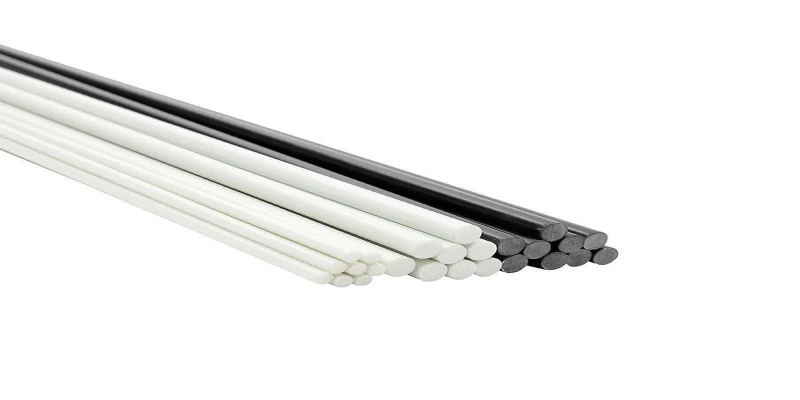
The Key of Cost-Effectiveness of Fiberglass Rods
Fiberglass rods are often chosen for camping chairs due to their lightweight nature and strength. These rods provide essential support, ensuring that the chair remains sturdy while being easy to transport. In terms of cost, fiberglass rods typically fall into a budget-friendly category compared to other materials such as aluminum or carbon fiber.
Factors Influencing the Cost of Fiberglass Rods
The cost of fiberglass rods can vary based on several factors. One key factor is the manufacturing process. High-quality fiberglass rods are made using advanced techniques that enhance their strength and flexibility, potentially increasing their price. Additionally, the diameter and length of the rods can influence cost. GangLong Fiberglass offers a range of rod sizes tailored to different camping chair designs, providing options that can fit various budgets.
Performance vs. Price
While discussing whether fiberglass rods used in camping chairs are cheap, it’s essential to consider performance alongside price. A type of fiberglass rod such as high strength fiberglass rods, are particularly known for their resilience, offering excellent flexibility and strength, which makes them suitable for outdoor use. They can withstand a fair amount of stress without breaking, which is vital for camping chairs that need to support a range of weights. This performance, combined with a reasonable price point, makes fiberglass rods an attractive choice for budget-conscious consumers.
Longevity and Durability
Durability is another significant factor in the cost-effectiveness of fiberglass rods. While they are often cheaper upfront than aluminum or carbon fiber, their longevity should also be taken into account. Fiberglass rods are resistant to rust and corrosion, making them suitable for outdoor environments where moisture and elements can be a concern. This durability can lead to lower replacement costs over time, further enhancing their value in camping chairs.
Weight Considerations
Weight plays a crucial role in the usability of camping chairs. Fiberglass rods are relatively lightweight, making them easier to transport. Although they may not be as light as some advanced materials, their weight is manageable for most users. This characteristic allows campers to enjoy convenience without significantly impacting the overall cost of the chair.
User Experience and Feedback
Feedback from users can provide valuable insights into the value of fiberglass rods in camping chairs. Many campers appreciate the balance of cost and performance that fiberglass rods offer. They report that these rods provide adequate support and comfort while being less expensive than alternatives. When evaluating whether fiberglass rods used in camping chairs are cheap, real-world experiences often highlight their effectiveness and affordability.
Tips for Hiring Experts in Cutting the Deck and Fiberglassing
Manufacturing and Sourcing about are Fiberglass Rods Used in Camping Chairs Cheap
The manufacturing and sourcing of fiberglass rods also play a role in their pricing. GangLong Fiberglass focuses on producing high-quality rods that are fiberglass rods used in camping chairs cheap, which allows them to maintain competitive pricing in the market. Sourcing raw materials locally can help reduce shipping costs, contributing to lower prices for consumers. This aspect is particularly important for those looking to purchase multiple camping chairs or components, as savings can add up.
Environmental Impact and Sustainability
Sustainability is an increasingly important consideration for many consumers. Fiberglass rods can be produced with less environmental impact compared to some metal counterparts. The raw materials used in fiberglass production are often abundant, and the manufacturing process can be more energy-efficient. When considering the question of whether fiberglass rods used in camping chairs are cheap, it’s worth noting that their environmental friendliness can add value to their overall cost.
Availability and Accessibility
Another factor influencing the perceived cost of fiberglass rods in camping chairs is their availability. Fiberglass rods are widely available in many outdoor and hardware stores, as well as online retailers. This accessibility often leads to competitive pricing, as consumers can easily compare options. Additionally, the popularity of fiberglass rods means that many manufacturers, including GangLong Fiberglass, produce fiberglass rods for variety of types and sizes, enhancing options for budget-conscious buyers.
Maintenance and Care
Maintaining fiberglass rods in camping chairs is relatively straightforward. Unlike metal rods, they do not require regular checks for rust or corrosion. A simple clean with soap and water can keep them in good condition. This low-maintenance aspect contributes to their cost-effectiveness, as less time and money are spent on upkeep.
Diamond Grinder Wheels: The Best Option for Cutting Concrete
Are Fiberglass Rods Used in Camping Chairs Cheap? Characteristics Beyond Cost
Fiberglass rods are commonly used in camping chairs not just for their affordability, but also for their unique physical properties that make them well-suited for outdoor products. While their lower cost is a significant factor, the versatility and benefits they offer make them an attractive choice for many camping chair designs. This article explores the key characteristics of fiberglass rods that contribute to their widespread use in camping chairs, beyond just being cheap.
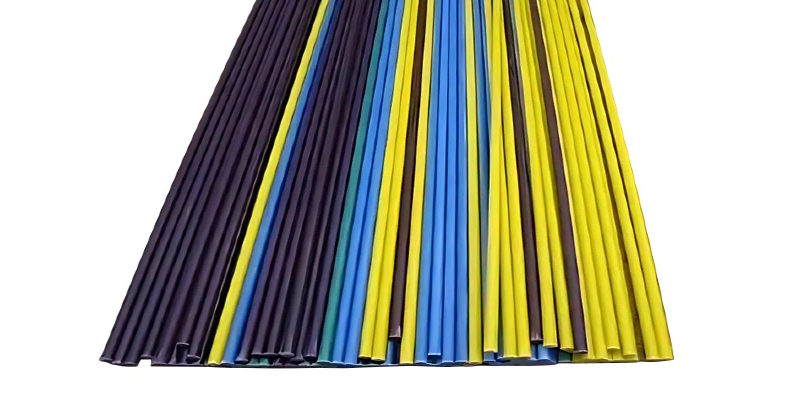
Lightweight Yet Strong
Fiberglass rods are known for their impressive strength-to-weight ratio, which makes them ideal for use in camping chairs. Despite being lightweight, they provide a considerable amount of support, which is essential for maintaining the chair’s structure. Their low weight ensures that camping chairs are easy to transport, a critical feature for outdoor gear where portability is important. Fiberglass rods manage to deliver strength and stability without making the chair cumbersome, which is why they are so commonly chosen.
Flexibility and Durability
Fiberglass rods are highly flexible, which reduces the risk of breakage when the chair is under stress. The flexibility of fiberglass helps it absorb and distribute weight evenly, preventing it from snapping or cracking easily. This characteristic is particularly useful in camping chairs, where the frame needs to be able to handle shifting movements without breaking. The durability of fiberglass ensures that the chairs maintain their functionality even with repeated use over time, though they may not be as long-lasting as higher-end materials like aluminum.
Corrosion and Weather Resistance
Another significant characteristic of fiberglass rods is their resistance to corrosion and harsh weather conditions. Unlike metal rods, which can rust or degrade under prolonged exposure to moisture, fiberglass is immune to such issues. This makes it an excellent choice for camping chairs used in various weather conditions, from humid environments to wet conditions. The ability of fiberglass rods to resist corrosion ensures that the camping chair frame maintains its integrity and functionality over time, even with regular exposure to outdoor elements.
Cost-Effective Option
Fiberglass rods are an affordable option for camping chairs, especially when compared to materials like aluminum or carbon fiber. The lower production cost of fiberglass makes it a more budget-friendly choice for manufacturers, which ultimately benefits the consumer. While the material is cheaper, it still provides a satisfactory level of performance for most casual campers. For those on a budget, fiberglass rods provide an accessible option without sacrificing too much in terms of functionality or comfort.
Easy to Handle and Assemble
Fiberglass rods are also appreciated for their ease of handling and assembly. They are lightweight and flexible, making them easier to work with during manufacturing and assembly. In camping chairs, these rods are often designed in a way that makes the folding and setup process simple. Their flexibility also means that the chair frame can be compacted easily for storage or transportation. This makes fiberglass rods a practical choice for those who need camping gear that is both easy to use and portable.
In conclusion, fiberglass rods used in camping chairs are not only cheap, but they also provide a range of valuable features like strength, flexibility, weather resistance, and ease of handling. These characteristics make them a solid choice for those looking for functional, budget-friendly outdoor furniture.
Are Fiberglass Rods Used in Camping Chairs Cheap? A Comparison of Alternative Materials
Fiberglass rods are commonly used in the construction of camping chairs due to their affordability, flexibility, and decent strength-to-weight ratio. However, other materials such as aluminum, steel, and carbon fiber can also be used in the frame construction of camping chairs. Each material has distinct advantages and disadvantages when compared to fiberglass, affecting the overall comfort, durability, weight, and cost of the chair. In this article, we will explore the different materials used for camping chair frames and compare them with fiberglass rods in terms of their performance and value for money.
Aluminum Poles: Lightweight and Durable
Aluminum is a popular material for camping chair frames because it offers a good balance between strength and weight. It is significantly lighter than steel and more durable than fiberglass, making it an excellent choice for camping gear.
Advantages:
- Lightweight: Aluminum is much lighter than steel, making it easier to carry around. This is a key advantage for campers who prioritize portability.
- Durability: Aluminum is resistant to rust and corrosion, ensuring that it can handle exposure to moisture and outdoor elements for extended periods without degradation.
- Strength-to-Weight Ratio: It offers a higher strength-to-weight ratio than fiberglass, meaning it can support more weight without significantly increasing the weight of the chair.
Disadvantages:
- Price: While not as expensive as carbon fiber, aluminum tends to be pricier than fiberglass, especially when used in high-quality designs.
- Less Flexible: Aluminum is not as flexible as fiberglass, so it can be more prone to bending or breaking under excessive stress, especially in low-quality builds.
Steel Poles: Strength and Stability
Steel is another material used in camping chair frames, primarily for heavy-duty applications. Though heavier than both fiberglass and aluminum, steel poles provide maximum stability and can support heavier loads.
Advantages:
- Strength: Steel is one of the strongest materials available for camping chair frames, making it suitable for larger individuals or high-use environments where durability is crucial.
- Stability: The rigidity of steel provides added stability, ensuring the frame will not wobble or flex excessively under pressure.
Disadvantages:
- Heavier Weight: Steel poles are much heavier than fiberglass, aluminum, and carbon fiber, which can be a significant disadvantage for backpackers and campers seeking lightweight gear.
- Corrosion: Steel is susceptible to rust and corrosion when exposed to moisture, requiring more maintenance and care when used outdoors, especially in wet or humid conditions.
- Cost: While cheaper than carbon fiber, steel is often more expensive than fiberglass, particularly when quality materials are used.
Carbon Fiber Poles: The Lightweight Premium Option
Carbon fiber poles are known for being the lightest and most durable material available, offering superior strength while maintaining an incredibly low weight.
Advantages:
- Lightweight: Carbon fiber is extremely lightweight, making it the ideal choice for ultralight camping enthusiasts who want to minimize the weight of their gear.
- Strength and Durability: Carbon fiber is stronger and more durable than fiberglass, offering exceptional load-bearing capabilities.
- Corrosion-Resistant: Unlike steel, carbon fiber does not rust, making it ideal for wet conditions and long-term use in outdoor environments.
Disadvantages:
- Price: Carbon fiber is the most expensive material among the options discussed, making it less accessible for budget-conscious campers.
- Brittleness: While very strong under tension, carbon fiber is more brittle than fiberglass or aluminum. It can snap under a sharp impact, which means it may not be as forgiving in rugged environments.
Plastic and PVC Poles: Budget-Friendly and Functional
Plastic or PVC poles are sometimes used in budget camping chairs due to their low cost and availability. These materials are typically found in chairs designed for lighter use or one-time outdoor activities.
Advantages:
- Affordable: Plastic and PVC are among the least expensive materials, making them a great choice for budget-conscious buyers.
- Lightweight: Though not as light as aluminum or carbon fiber, plastic and PVC poles are generally lighter than steel and durable enough for light outdoor use.
Disadvantages:
- Lower Durability: Plastic and PVC poles lack the strength and long-term durability of materials like aluminum, steel, and fiberglass. They may crack or break under pressure or over time with frequent exposure to UV light.
- Limited Support: These materials are not ideal for supporting heavier individuals, and their overall longevity is shorter than that of metal or fiberglass poles.
Fiberglass rods are indeed one of the more affordable materials used in camping chairs, but they are far from the only option. Aluminum offers a lighter, stronger alternative, though at a slightly higher cost. Steel provides exceptional strength but comes at the expense of weight and corrosion risks. Carbon fiber, while offering the best performance in terms of weight and strength, is also the most expensive choice. Plastic and PVC are affordable but less durable and suitable only for light use. When selecting the right material for a camping chair frame, it’s essential to consider the balance between weight, strength, durability, and cost, depending on your specific camping needs.
FAQs about Are Fiberglass Rods Used in Camping Chairs Cheap
Tent rods are primarily made from a few key materials, each chosen for its unique properties that contribute to the overall functionality of the tent. Common materials include aluminum, fiberglass, and occasionally carbon fiber. Aluminum rods are popular due to their strength-to-weight ratio, making them both lightweight and durable, ideal for various weather conditions. Fiberglass rods, on the other hand, offer flexibility and resistance to bending, making them a good choice for campers who prioritize ease of transport. Some high-end tents may use carbon fiber rods, which are lighter and stronger than aluminum but come at a higher cost. In addition to the rods themselves, the connectors and hubs are typically made from durable plastics or metal, ensuring that the tent maintains its structure during use. The choice of material for tent rods plays a crucial role in the tent’s performance, weight, and overall durability.
Camping chairs are typically made from a combination of materials to ensure they are lightweight, durable, and comfortable. The frame is often constructed from aluminum or steel, providing strength and stability. Aluminum is favored for its lightweight properties, while steel offers added robustness. The seating area is usually made from synthetic fabrics like polyester or nylon, which are chosen for their resistance to wear and tear, as well as their ability to dry quickly. Many camping chairs also feature foam padding for comfort, with some models incorporating breathable mesh panels for improved ventilation. Additionally, high-quality camping chairs may use reinforced stitching and durable zippers to enhance longevity. The blend of these materials ensures that camping chairs can withstand outdoor conditions while providing a comfortable seating option for campers.
Fiberglass rods have a wide range of applications, making them versatile tools in various fields. In construction and engineering, they are often used as reinforcement materials due to their strength and lightweight nature. In the fishing industry, fiberglass rods are popular for creating fishing poles because they offer excellent flexibility and sensitivity, enhancing the fishing experience. Additionally, fiberglass rods are commonly used in the manufacturing of sporting goods, such as archery equipment and kites, because they can withstand tension and impact. In crafting, they serve as support structures for model airplanes and other lightweight projects. The durability and corrosion resistance of fiberglass also make it suitable for use in marine applications, where it can withstand harsh environments. Overall, fiberglass rods are valuable in many industries, thanks to their unique properties.
Fibreglass tent poles are commonly used in camping tents due to their affordability and adequate strength. While they are not as durable as aluminum or carbon fiber poles, they can handle moderate conditions, making them suitable for casual campers or short trips. One of the main benefits of fiberglass poles is their light weight, which makes them easy to carry. However, they are more prone to breaking under extreme pressure or stress, such as strong winds or heavy snow. Compared to aluminum poles, they don’t offer the same level of durability or flexibility, but for most casual camping trips, fiberglass tent poles perform well enough. In the case of camping chairs, fiberglass rods also offer a relatively inexpensive option, but they can lack the robustness and flexibility of higher-end materials.
Aluminum tent poles are generally considered superior to fiberglass poles due to their increased durability, strength, and flexibility. They can withstand more intense weather conditions, such as strong winds and heavy rain, making them ideal for rugged, long-term camping trips. Unlike fiberglass poles, which can snap or splinter under pressure, aluminum poles are more resistant to breaking and can bend without cracking. They are also lighter and more flexible, which adds to their resilience during use. However, aluminum poles are more expensive than fiberglass, which can make a difference in the overall cost of your camping gear. In terms of camping chairs, fiberglass rods are more cost-effective but may not offer the same longevity as aluminum in the long run.
No, not all tent poles are made from fiberglass. While fiberglass is a common material for budget-friendly tents, many modern tents feature poles made from other materials such as aluminum, carbon fiber, or steel. Each material offers its own set of benefits and trade-offs. Fiberglass is often chosen for its lower cost, making it a popular option for budget-conscious campers. However, high-performance tents, especially those designed for harsh environments or extended use, typically use aluminum or carbon fiber poles due to their greater strength, lighter weight, and improved durability. For camping chairs, fiberglass rods are often used due to their affordability, though premium chairs might feature metal or carbon fiber frames for added support.
Carbon fiber poles can be worth the investment for serious campers or those who prioritize performance. They are significantly lighter than both fiberglass and aluminum poles, making them an excellent option for backpackers and those who need to minimize weight. Carbon fiber is also extremely durable, offering high resistance to breakage and fatigue. However, carbon fiber poles are typically more expensive, so they might not be the best choice for casual campers or those on a budget. In the context of camping chairs, carbon fiber rods provide excellent strength while being incredibly lightweight, offering an edge in both portability and durability, but they come at a higher price point.
Fibreglass rods are a popular choice for many recreational and practical uses, including in camping chairs, tents, and other outdoor gear. They are affordable, lightweight, and flexible, making them well-suited for use in products that require bending without breaking. Fibreglass rods are relatively durable in normal conditions, though they may not offer the same level of strength and long-term reliability as more expensive materials like aluminum or carbon fiber. For camping chairs, fiberglass rods can be an economical choice, as they provide adequate support without the higher cost of metal or carbon fiber alternatives. However, they can break or splinter if subjected to excessive force or wear over time, which is a downside when compared to more robust materials.
Yes, fiberglass rods are quite flexible, which makes them an excellent choice for products like camping chairs and tents where bending is required. Their flexibility allows them to absorb stress and adapt to movements without snapping, unlike more rigid materials such as aluminum or steel. This characteristic is especially useful in camping chairs, where the frame needs to provide both support and comfort without being overly stiff. However, while they are flexible, fiberglass rods still have limits. Excessive bending or stress can cause them to crack or break, which is why they may not be the best option for extreme outdoor conditions. Despite this, they offer a good balance of flexibility and strength for most casual camping scenarios.
It is not recommended to cut fiberglass tent poles, as the material can splinter or weaken when cut improperly. Fiberglass poles are typically designed with a specific length and taper, and altering them could compromise the structural integrity of the pole, leading to breakage or reduced performance. Moreover, cutting fiberglass creates dangerous shards that can irritate the skin or eyes. If you absolutely need to shorten the poles, it’s best to consult a professional or the manufacturer for guidance, as there are specialized tools and techniques for cutting fiberglass safely. For camping chairs, fiberglass rods are sometimes adjustable, but any alterations should be done with caution to avoid damaging the frame.
Fibreglass tent poles are flexible to a certain degree, meaning they can bend without breaking under normal use. This bending characteristic is what allows them to handle moderate winds and light pressure. However, unlike aluminum poles, which are more elastic and can bend and return to their original shape, fiberglass poles have a higher risk of snapping if bent too far. In extreme conditions, such as heavy winds or snow loads, fiberglass poles are more likely to break than to bend. While they may bend slightly under pressure, they do not offer the same flexibility as aluminum or carbon fiber poles, making them less ideal for severe outdoor environments. For camping chairs, fiberglass rods may bend under pressure but can also break if over-stressed.
Tent poles are typically made from aluminum rather than iron for several key reasons. First, aluminum is much lighter than iron, which makes it easier to carry and set up a tent. Since tent poles are often carried long distances, weight reduction is essential for most campers. Aluminum is also more corrosion-resistant than iron, which is important in outdoor environments where moisture can cause rusting. Furthermore, aluminum has a good strength-to-weight ratio, providing the necessary durability without excessive weight. Iron, while strong, is heavier, more prone to rust, and less ideal for portable outdoor gear like tents.
Poles for outdoor equipment like tents, chairs, and shelters are typically made from materials such as fiberglass, aluminum, steel, and carbon fiber. Fiberglass poles, often used in budget camping chairs, are lightweight, flexible, and durable. Aluminum poles are more common for high-end camping equipment due to their strength-to-weight ratio, offering greater durability without adding much weight. Steel poles are used in heavy-duty applications, providing strength and sturdiness, although they can be heavier than aluminum or fiberglass. Carbon fiber poles are the lightest and strongest, though they come with a higher price tag. The material choice depends on the application’s weight, strength, and cost requirements.
The best material for tent poles depends on the camping conditions and personal preferences. Aluminum is one of the top choices due to its combination of strength, lightweight, and durability. It’s resistant to bending and breaking, making it suitable for various weather conditions. For those seeking ultra-lightweight options, carbon fiber is an excellent alternative, although it is more expensive. Fiberglass is also a popular choice, especially in budget-friendly tents, as it offers a balance of strength, flexibility, and cost-effectiveness. Each material has its trade-offs, so choosing the right one depends on your specific needs, such as weight, strength, and cost.
The best lubricant for tent poles, including fiberglass, is a silicone-based lubricant. This type of lubricant helps to reduce friction between the pole segments, making it easier to assemble and disassemble the tent. It also provides moisture resistance, which can protect the poles from corrosion or wear. Silicone lubricants don’t attract dirt or dust, making them an excellent choice for maintaining smooth pole operation without causing grime buildup. Avoid petroleum-based lubricants, as they can damage the fiberglass material over time. Applying silicone lubricant to your tent poles periodically can prolong their life and ensure easier setup.
Composite materials for tent poles generally include fiberglass, carbon fiber, and hybrid versions that combine both materials. Fiberglass is the most common composite used due to its affordability and flexibility, which help absorb impact and reduce breakage. Carbon fiber tent poles, though more expensive, provide superior strength and are lighter than fiberglass, making them popular for lightweight or ultralight tents. Hybrid composite poles, which combine fiberglass and carbon fiber, offer a balance of strength, flexibility, and reduced weight, making them ideal for campers who need durability without sacrificing portability. Each material has its benefits depending on the camping conditions and budget.
If a fiberglass tent pole breaks, you can replace it with materials like aluminum, carbon fiber, or even PVC pipe. Aluminum is one of the most common and effective replacements due to its strength-to-weight ratio, making it a solid choice for tent poles. Carbon fiber poles are lightweight and strong but can be more expensive than fiberglass. For a temporary or budget-friendly fix, PVC pipe can be used, though it is less durable and may not offer the same flexibility as fiberglass or aluminum. When replacing tent poles, it’s important to measure the original pole’s length and diameter to ensure a proper fit.
Fiberglass poles are widely used in various outdoor products, especially camping equipment like tents, chairs, and shelters. In camping chairs, fiberglass poles provide the necessary structure to support the seat and backrest, offering both comfort and stability. Fiberglass is also used for tent poles, as it’s lightweight, flexible, and relatively strong, making it an excellent material for setting up temporary outdoor structures. Beyond camping gear, fiberglass poles are employed in applications such as fishing rods, flagpoles, and even certain types of sports equipment. Their durability and resistance to corrosion make them ideal for outdoor use, where exposure to the elements is common.
Fiberglass poles are relatively strong, though not as strong as aluminum or carbon fiber poles. They offer good flexibility, making them resistant to breaking under stress. This flexibility is an advantage in camping chairs, as it allows the poles to bend slightly without snapping. However, fiberglass poles are not immune to damage. They can be prone to cracking if bent too far or if subjected to significant impacts. Compared to cheaper materials, fiberglass poles offer a balance between strength and lightweight construction, providing enough support for the average camper. They are particularly effective for lightweight camping chairs but might not be ideal for high-stress applications like tents or hiking poles.
Fiberglass poles, including those used in camping chairs, are known for their durability. On average, they can last anywhere from 5 to 10 years, depending on usage, storage, and exposure to elements like UV light, moisture, and temperature extremes. Over time, fiberglass can become brittle, especially when subjected to consistent bending or high stress, which can cause them to snap. However, proper care and regular inspection of the poles, such as ensuring they are not exposed to prolonged sunlight or wet conditions, can significantly extend their lifespan. As camping chairs are not usually subjected to harsh conditions like tents or hiking poles, fiberglass poles in chairs often last longer with minimal wear.

As the editor of GangLong Fiberglass, I have years of experience and in-depth research, focusing on cable tray products, fiberglass solutions, and grille systems. I incorporate years of industry insights and practical experience into every content, committed to promoting the progress of the industry. At GangLong Fiberglass, my commitment is reflected in every product, from innovative cable trays to durable fiberglass solutions and sturdy grille systems. As an authoritative voice in the industry, my goal is to provide valuable information to professionals and businesses and promote forward-looking solutions.


